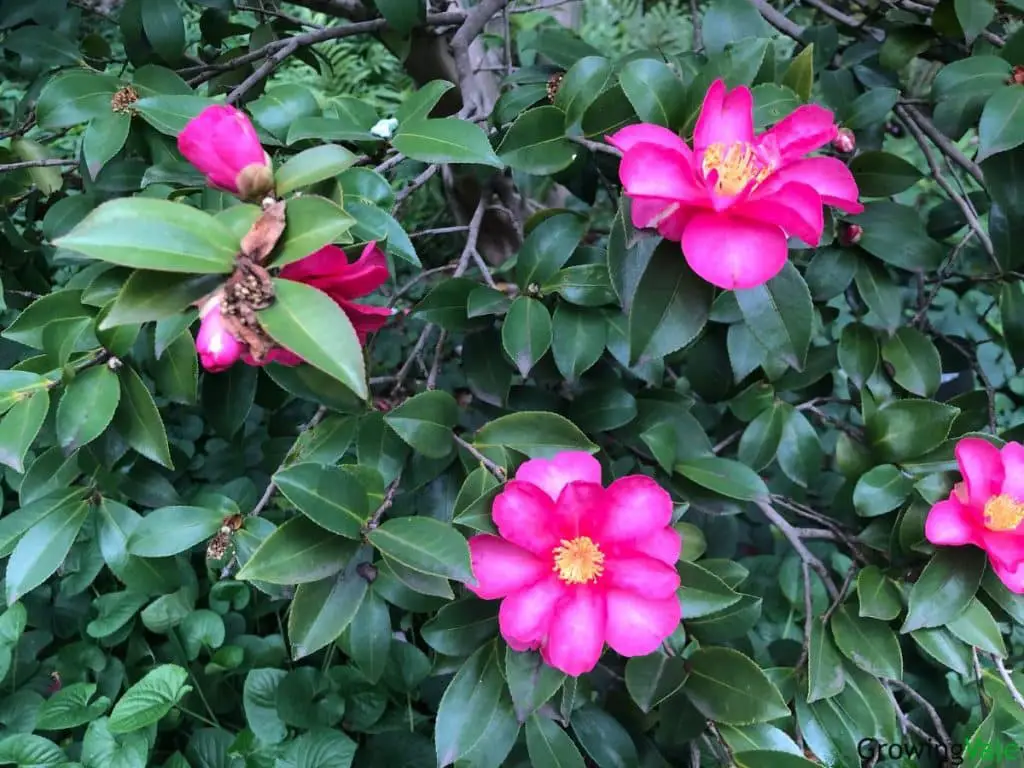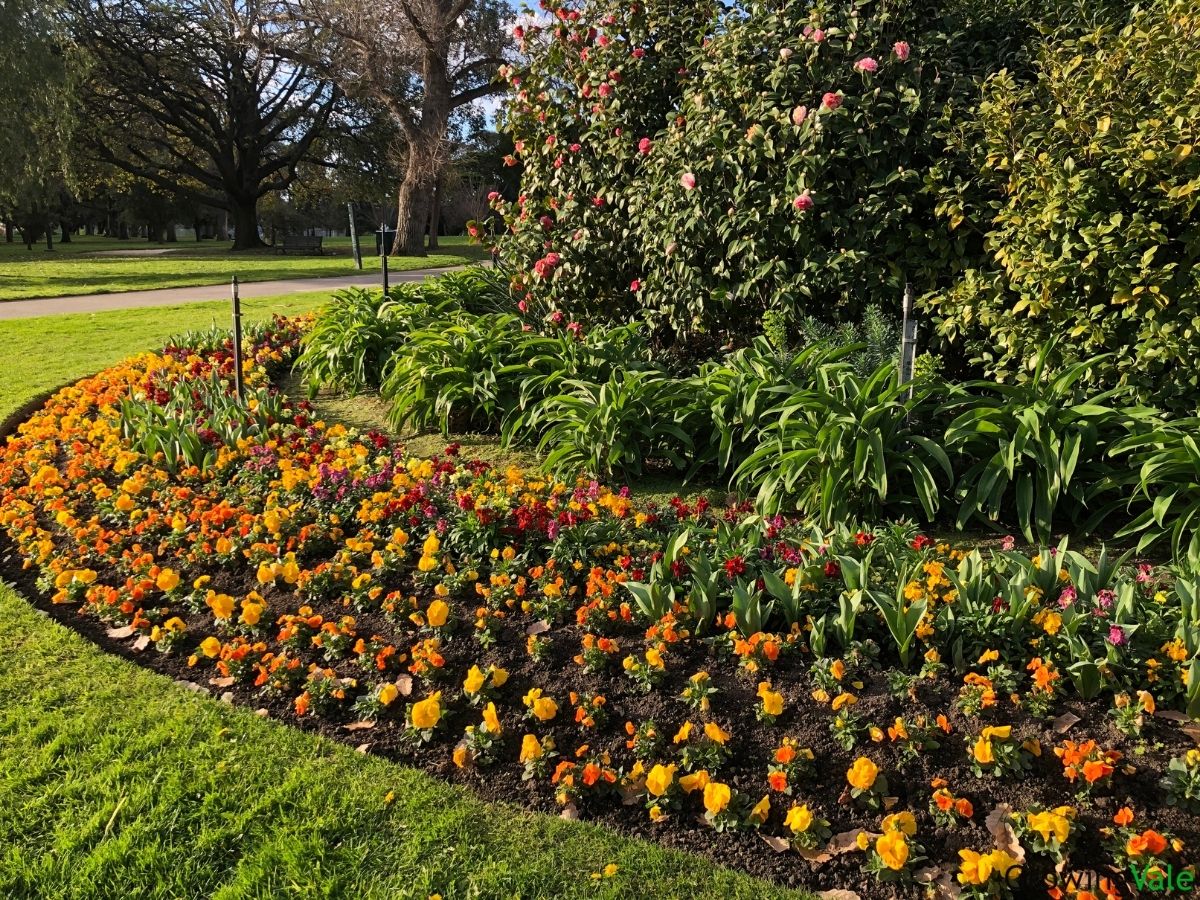Have you ever wondered about how many beautiful flowers there are and which ones you can grow in your garden? There are perennials that flower year after year, biennials that last for two years and flower during the second, and annuals that only live for a year! Not to mention flowering trees and shrubs which definitely deserve a place in your growing scheme!
With so many wonderful names of flowers to choose from and learn about, choosing can seem like a difficult task! To make that a little easier, here is a list of flowering plants beginning with the letter C, plus a short description.
#1 Calendula
Calendulas are lovely plants that are often referred to as pot marigolds, however, they aren’t marigolds at all! They are short-lived perennials that are native to Southern Europe and the Eastern Mediterranean and are usually grown as annuals.
They belong to the daisy family and have daisy-like flowers that bloom in large numbers. Their flowers are usually in bright shades of orange or yellow, but white and pink varieties can be found. Calendulas are known to deter insects, so are often planted in vegetable gardens alongside crops as a natural pest deterrent!
#2 Calla Lily
Calla lilies, despite their name, are not actually true lilies. They are loved for their highly recognizable flowers which stand upright and are shaped like a trumpet! They come in many wonderful colors such as white, pink, red, yellow, orange, and purple, and can even be bi-colored.
They like being in boggy areas so are perfect for planting around the edges of ponds or streams. Calla lilies are also good container plants and can be grown indoors too. Plant or position them in sunny areas, as although they can tolerate a little light shade, they won’t perform as well!
#3 Camellia

Camellias are originally from East Asia and are a group of trees and shrubs. The most famous camellia plant is C. sinensis, a shrub whose leaves are used for tea! Camellia plants have wonderful and showy flowers and are often grown as ornamentals.
These plants are evergreen and typically (depending on climate and type) flower from fall until spring. They come in wonderful shades of red, pink, and white, and can be variegated too! Flowers have different forms such as single, double, peony, anemone, and more.
#4 Campanula
Campanulas, which are also called bell flowers, are a large group of roughly 420 species! They may be annuals, perennials, or biennials, but the most popular garden ornamentals are perennials. They are mostly found in temperate regions in the North, tropical mountains, and parts of the Mediterranean.
They have delicate bell-shaped flowers that come in hues of bluish-purple, pink, and white. Varieties range from low-growing, creeping types, to taller types that will tower over the garden bed. Grow them in meadow or cottage-style gardens!
#5 Candytuft
Candytufts belong to the mustard family and are mostly native to the Mediterranean. They may be annuals or perennials depending on the species and are highly popular garden ornamentals. Be careful, because although their common name contains the word “candy” they do not necessarily have a pleasant or sweet aroma!
They are low-growing plants that are great for edging pathways or the front of borders. Flowers are small and grow in clusters that can be white or pink and stand out against the green foliage. Candytufts are attractive to bees so are a good choice for pollinator gardens.
#6 Canterbury Bells
Canterbury bells are one of the most-loved species of the genus Campanula or bell flowers. They are biennials that are originally from Southern Europe and were extremely popular in the Victorian Era! Also named the cup and saucer plant, these plants have 2-inch long cup or bell-shaped flowers that come in white, blue, purple, or pink.
These plants are summer bloomers in their second year and may grow as tall as 3 feet. Plant them in full sun to partial shade in cottage-style or English garden schemes!
#7 Cape Marigold
Cape marigolds are sunny annuals that come from South Africa. They are drought tolerant and should be planted in areas that receive full sun. Their flowers are daisy-like, showy, and will pack a punch in any garden! They have a long blooming season from spring to fall.
Plant them en-masse along beds and borders for the biggest impact, or grow them in containers to brighten up patios or city gardens! Flowers can be orange, pink, or white, and close up overnight or on particularly cloudy days.
#8 Cardinal Flower
These showy perennials, which are also known as Indian pinks or lobelias, can grow between 4 and 5 feet and are originally from the Eastern US. They have tall racemes that are adorned with vivid crimson flowers, although there are many hybrid cultivars that come in pink and white too!
Cardinal flowers are a top choice for landscaping around ponds as they may be grown in up to 3 inches of standing water and are highly tolerable in wet conditions. They also make great additions to rain gardens. Their flowers are adored by hummingbirds and butterflies.
#9 Carnation
Carnations are favorites among gardeners and florists and go by many names including clove pinks, gillyflowers. They are herbaceous perennials that are often grown as annuals, prefer cool summer temperatures, and flower in midsummer.
These pants are prized for their pretty, fringed-petaled flowers that come in white, pink, red, yellow, orange, purple! There are also variegated varieties available. Carnations are fantastic border plants for cottage-style, butterfly gardens, or patios since they are suited to container planting too.
#10 China Aster
Also known as annual asters, these firm favorites are herbaceous annuals native to China. These plants are highly cultivated, with some varieties reaching as tall as 3 feet. Flowerheads can grow as wide as 6 inches and have a range of forms from daisy-like single flowers to fully double flowerheads with a pompom or shaggy look.
China asters come in a wide range of colors including white, pink, red, yellow, purple, and blue! They grow well in pots and look incredible when planted en-masse in various colors along cottage-style or cutting garden borders. These plants bloom from summer to fall and make fantastic cut flowers!
#11 Chocolate Daisy
Chocolate daisies, true to their name, are said to give off a pleasant and sweet chocolate aroma! These wonderful wildflowers will definitely demand attention in the garden and have lovely daisy-like flowers. In warmer climates these perennials will flower year-round, otherwise expect them to flower from spring to fall.
Their flowers have sunshine yellow outer rays with maroon and green centers. The native habitat of these plants is dry, rocky limestone plains or grasslands making them top choices for rock or drought-tolerant gardens! Chocolate daisies are great in borders and will attract bees, butterflies, and songbirds into the area.
#12 Chrysanthemum
Chrysanthemum flower is one of the most popular garden ornamentals and is known fondly among growers as “mums”. This group has around 40 species of flowering plants, but the most common type grown for bouquets and gardens is C. x morifolium. This group contains over 100 cultivars that have different flower forms!
Flower forms include spider, button, daisy, and pompom, and come in many colors such as white, pink, red, orange, yellow, bronze, and purple. These herbaceous perennials suit pots, beds, and borders, and look sensational in cottage-style garden schemes.
#13 Clematis
Also known as leather flower, old man’s beard, or traveler’s joy, clematis is a highly decorative flowering vine! These woody perennials have showy flowers that come in almost every color and attract pollinators like bees, butterflies, and hummingbirds.
They have a long blooming period from spring to fall and produce masses of fragrant flowers. Flower shape varies between species and varieties and can be trumpet, star, or cross-shaped. Grow them in pollinator, cottage, or Asian-style gardens, but be mindful with pets and small children as Clematis plants are classified as toxic.
#14 Columbine
Columbine flower belongs to a group of over 100 flowering perennials that are in the genus Aquilegia. They may also be called granny’s bonnet and are must-haves for any cottage-style or traditional garden! A few specific species and hybrids have been highly cultivated for their incredible and ornate flowers which are said to resemble a jester’s hat.
Their flowers emerge from mid-spring and last throughout the summer, gracing the garden with both vivid and softer hues of white, pink, red, yellow, blue, and purple. They will bring bees, butterflies, and hummingbirds into the area, and can be planted in pots if watered on a regular basis.
#15 Coneflower
These lovely plants belong to the genus Echinacea and are somewhat associated with the midwestern prairies they come from. They are mid-summer bloomers and flower in profusion creating a haven for pollinators and wildlife! Fading flowers can be left in the garden to provide an important source of seeds for birds such as goldfinches.
The coneflower is a drought-tolerant perennial that is easily grown and loves the sunshine. They can be easily recognized by their daisy-like flowers that have almost downward petals and their central “cone” which bulges out. The popularity of these plants has led to many wonderful and showy cultivars and a good range of bright colors!
#16 Coral Bells
Although coral bells have beautiful flowers, these plants are mostly prized by gardeners for their showy colorful foliage. These perennials can tolerate both light shade and full sun conditions depending on the variety, making them the perfect candidates for shade gardens! They look particularly stunning when used as edging on pathways or planted in small groups!
Their bold leaves come in all manner of shades including red, maroon, bronze, and green. Coral bells flowers are dainty little flowers that hang in loose clusters on thin stems that rise above the foliage. They flower from June and will remain for the rest of the summer growing season.
#17 Corydalis
Corydalis plants belong to a large group of over 300 species of annuals and perennials. They belong to the poppy family, with the largest number of species originally coming from the Sino-Himalayan region. Their flowers are showy, tubular, and come in a range of colors including white, pink, yellow, purple, and blue!
These plants grow well in shady areas, making them great for woodland gardens or dark corners in the garden or patio. They are low-maintenance and can grow well in pots! The blooming season is from spring to fall.
#18 Cosmos
These stunning flowering plants are a group of 40 species that are native to tropical America. The species C. bipinnatus is where most ornamental annual varieties have come from and is known as the garden cosmos. They may grow as tall as 4 feet and have showy, daisy-like flowers that appear from spring to fall with proper care.
Blooms may grow as wide as 3 – 6 inches and have 7-20 outer rays and sunny yellow centers. Cosmos flowers can be white, pink, purple, and yellow, and make attractive cut flowers for indoors. Cosmos are extremely easy to grow, making them great for planting with children. Grow them in coastal or cottage-style gardens.
#19 Cranesbill Geranium
Cranesbill or hardy geraniums are perennials that get their common name from their long narrow fruit that resembles a crane’s bill! Depending on the variety, they grow well in areas with full sun or partial shade, making them an extremely versatile group and worthy of any garden. Grow them in rock, woodland, or cottage-style gardens.
Their wonderful flowers normally emerge from mid to late spring lasting between 2 and 4 weeks. They come in many delightful hues of white, pink, purple, maroon, and blue, with darker or lighter contrasting centers and veining. Cranesbill geraniums are valuable in pollinator gardens as they attract bees and butterflies.

